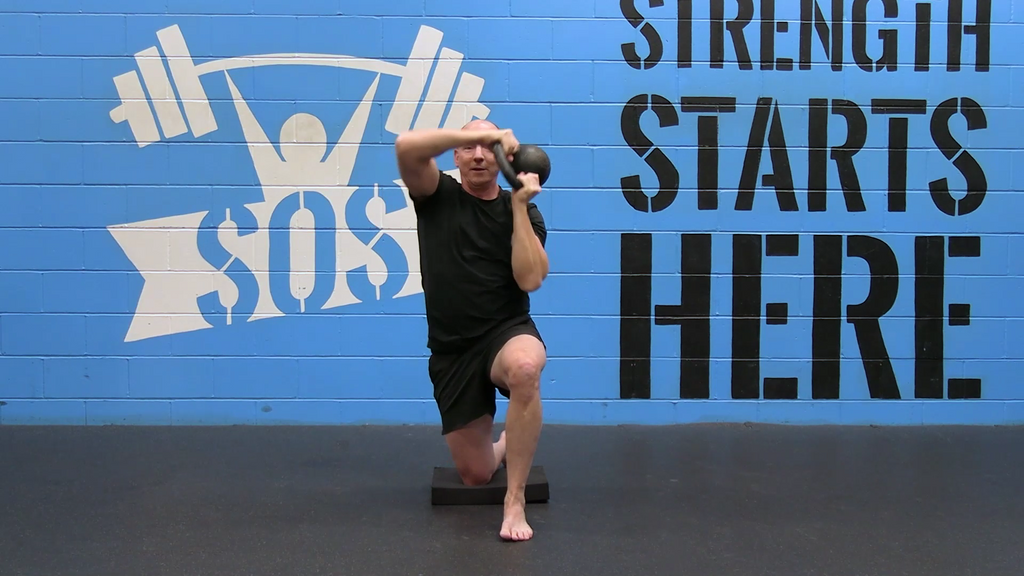
Discover the Power of Kettlebells: A Comprehensive Guide for Beginners
The Benefits of Kettlebell Training
Efficiency in Workouts:
Kettlebell exercises are dynamic and involve multiple muscle groups simultaneously. This leads to more efficient workouts, allowing you to burn calories and build strength in less time compared to traditional isolated exercises.
Improved Cardiovascular Health:
The constant movement and transitions between exercises in a kettlebell workout elevate your heart rate, contributing to improved cardiovascular health. This cardiovascular aspect makes kettlebell training an excellent choice for those seeking a well-rounded fitness routine.
Enhanced Functional Strength:
Kettlebell exercises often mimic real-life movements, promoting functional strength. This not only helps in daily activities but also reduces the risk of injury by improving stability and coordination.
Versatility:
Kettlebells are incredibly versatile. From swings and squats to Turkish get-ups and snatches, the variety of exercises allows for a diverse and engaging workout routine, preventing boredom and keeping your body challenged.
Getting Started with Kettlebell Training
Choose the Right Kettlebell:
Selecting the appropriate weight is crucial for a successful kettlebell workout. As a beginner, start with a lighter weight to master proper form and technique. A general guideline is to begin with a kettlebell that allows you to perform 10-15 repetitions with good form.
Learn the Basics:
Before diving into complex movements, master the foundational kettlebell exercises. Focus on movements like the kettlebell swing, goblet squat, and Turkish get-up. These exercises lay the groundwork for more advanced techniques.
Prioritize Technique Over Intensity:
Proper form is paramount in kettlebell training to prevent injuries. Begin with bodyweight exercises to familiarize yourself with the movements before incorporating weights. As you progress, gradually increase the weight while maintaining strict form.
Safety First
Before embarking on your kettlebell journey, it's essential to prioritize safety. Here are some key safety tips to keep in mind:
Warm-Up Adequately:
Begin each session with a thorough warm-up to prepare your muscles and joints for the demands of kettlebell training. Dynamic stretches and light cardio activities, such as jumping jacks or jogging in place, can help increase blood flow and flexibility.
Start with the Right Weight:
Avoid the temptation to lift heavy weights right from the beginning. Start with a weight that allows you to maintain proper form throughout the entire set. As you become more proficient, gradually progress to heavier kettlebells.
Focus on Proper Form:
Proper form is the foundation of effective and safe kettlebell training. Ensure that you understand the mechanics of each exercise before adding weight. If possible, seek guidance from a certified kettlebell instructor to learn correct techniques.
Listen to Your Body:
Pay attention to how your body responds during and after workouts. If you experience pain (other than the usual muscle soreness), stop the exercise and assess your form. Continuing through pain may lead to injuries.
Stay Hydrated:
Kettlebell training is intense and can lead to increased sweating. Stay hydrated by drinking water before, during, and after your workout to prevent dehydration.
In-Depth Look at Example Exercises
Kettlebell Swing:
The kettlebell swing is a foundational exercise that targets the posterior chain, including the hamstrings, glutes, and lower back. Start with a lighter kettlebell. Place the kettlebell on the ground, hinge at the hips, grab the handle with both hands, and explosively swing it to chest height by thrusting your hips forward. Keep your back straight and core engaged.
Goblet Squat:
Holding the kettlebell close to your chest, stand with your feet shoulder-width apart. Lower your body into a squat position, keeping your back straight and chest up. Ensure your knees track over your toes and return to the starting position. This exercise engages the quads, hamstrings, and glutes.
Turkish Get-Up:
Lie on your back with the kettlebell in one hand. Follow a series of movements, including rolling onto your side, propping yourself up on your elbow, and eventually standing up while keeping the kettlebell overhead. The Turkish Get-Up improves stability, strength, and mobility.
Kettlebell Deadlift:
Place the kettlebell between your feet with your toes pointing slightly outward. Hinge at your hips while maintaining a straight back and grasp the kettlebell with both hands. Stand up by extending your hips and knees. The deadlift targets the hamstrings, glutes, and lower back.
Incorporating kettlebells into your fitness routine can unlock a world of benefits, from improved strength and cardiovascular health to enhanced functional movement. By starting with the basics, prioritizing proper technique, and gradually increasing the intensity, you can harness the power of kettlebells to transform your fitness journey. Remember, consistency is key, so make kettlebell training a regular part of your exercise routine to reap the full rewards of this dynamic and effective workout tool.







